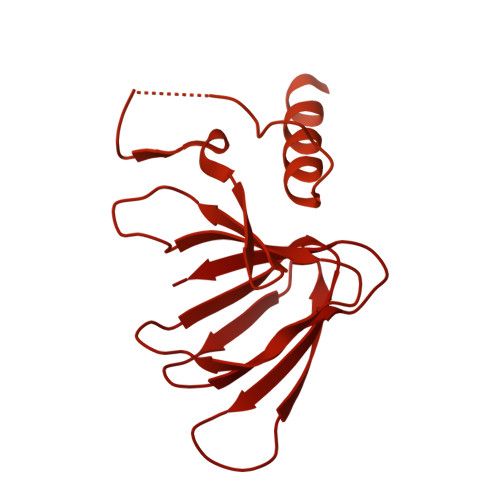Structural basis for centromere maintenance by Drosophila CENP-A chaperone CAL1.
Medina-Pritchard, B., Lazou, V., Zou, J., Byron, O., Abad, M.A., Rappsilber, J., Heun, P., Jeyaprakash, A.A.(2020) EMBO J 39: e103234-e103234
- PubMed: 32134144
- DOI: https://doi.org/10.15252/embj.2019103234
- Primary Citation of Related Structures:
6XWS, 6XWT, 6XWU, 6XWV - PubMed Abstract:
Centromeres are microtubule attachment sites on chromosomes defined by the enrichment of histone variant CENP-A-containing nucleosomes. To preserve centromere identity, CENP-A must be escorted to centromeres by a CENP-A-specific chaperone for deposition. Despite this essential requirement, many eukaryotes differ in the composition of players involved in centromere maintenance, highlighting the plasticity of this process. In humans, CENP-A recognition and centromere targeting are achieved by HJURP and the Mis18 complex, respectively. Using X-ray crystallography, we here show how Drosophila CAL1, an evolutionarily distinct CENP-A histone chaperone, binds both CENP-A and the centromere receptor CENP-C without the requirement for the Mis18 complex. While an N-terminal CAL1 fragment wraps around CENP-A/H4 through multiple physical contacts, a C-terminal CAL1 fragment directly binds a CENP-C cupin domain dimer. Although divergent at the primary structure level, CAL1 thus binds CENP-A/H4 using evolutionarily conserved and adaptive structural principles. The CAL1 binding site on CENP-C is strategically positioned near the cupin dimerisation interface, restricting binding to just one CAL1 molecule per CENP-C dimer. Overall, by demonstrating how CAL1 binds CENP-A/H4 and CENP-C, we provide key insights into the minimalistic principles underlying centromere maintenance.
- Wellcome Centre for Cell Biology, University of Edinburgh, Edinburgh, UK.
Organizational Affiliation:

















